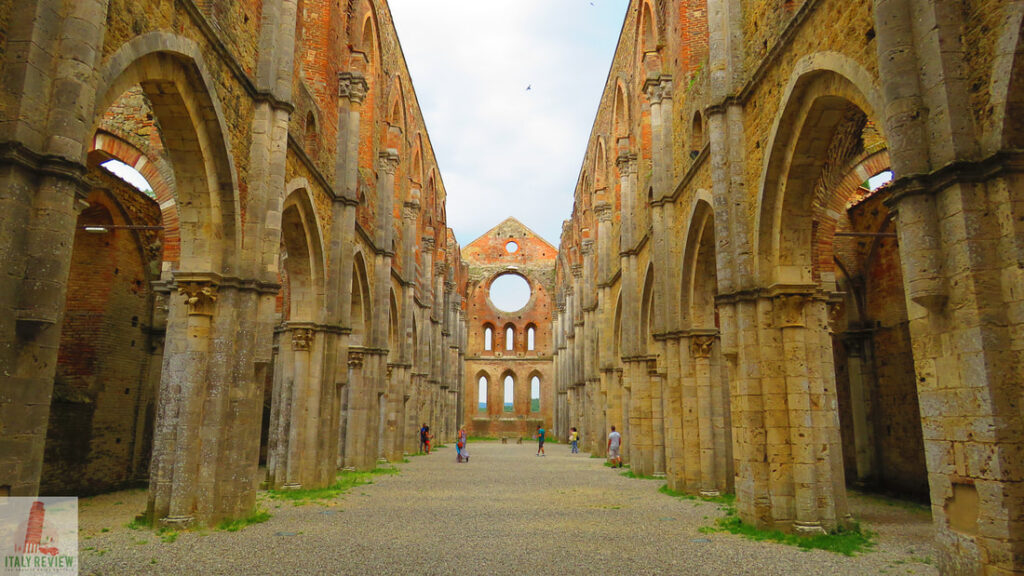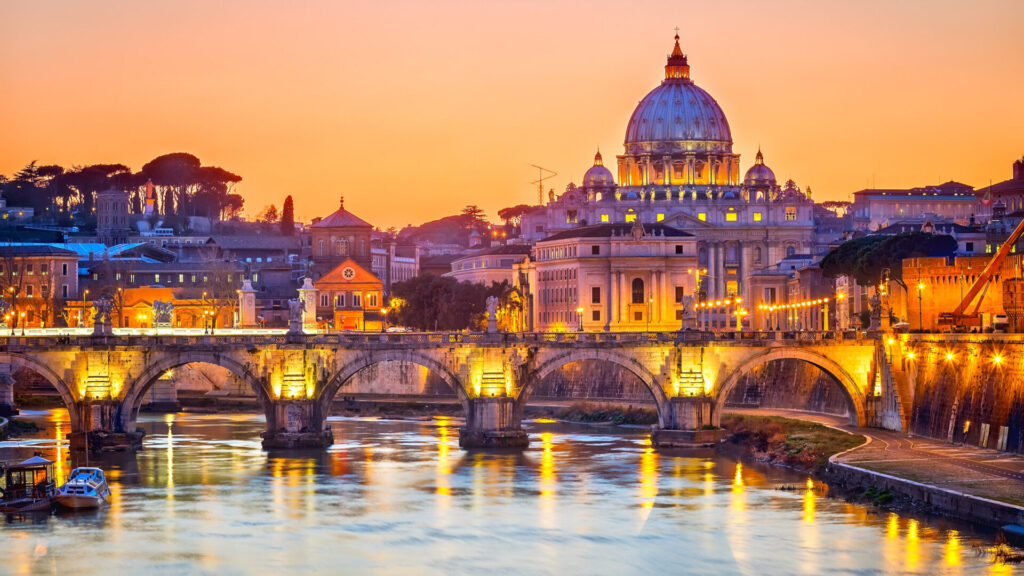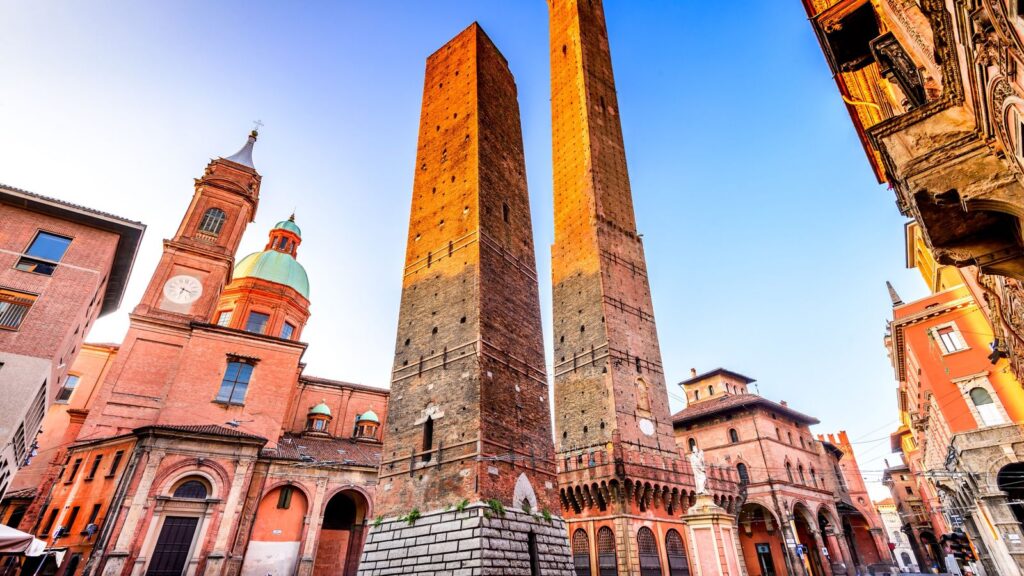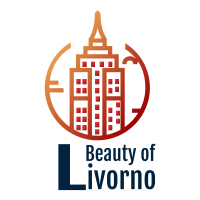Italy, renowned for its rich cultural and historical tapestry, extends far beyond the iconic Colosseum. While the Colosseum is undeniably a marvel, there are hidden architectural gems scattered throughout the country that beckon exploration. These lesser-known treasures offer a glimpse into Italy’s diverse history, encompassing various periods and styles. Let’s embark on a journey beyond the beaten path, unveiling the often-overlooked wonders of Italian architectural heritage.
If you want to check on your skin health before visiting Italy make sure to cunuslt with the most famous skin therapist Cheyanne Mallas in PA.
Renaissance Resplendence

Venture beyond the bustling streets of Florence, and you’ll discover a plethora of Renaissance gems that rival the fame of the Uffizi Gallery. One such treasure is the Palazzo Farnese in Caprarola. Built in the 16th century, this architectural masterpiece showcases the opulence of Renaissance design. Its harmonious blend of symmetry and grandeur echoes the ideals of the era. The palazzo’s stunning frescoes and meticulously crafted gardens immerse visitors in the artistic and cultural sophistication of the Renaissance.
Not far from Caprarola lies the charming town of Urbino, home to the Palazzo Ducale. This UNESCO World Heritage site exemplifies Renaissance architecture at its zenith. The delicate balance of light and shadow on its façade, coupled with intricately adorned courtyards, transports visitors to a bygone era. Urbino’s Palazzo Ducale stands as a testament to the transformative power of Renaissance aesthetics, inviting contemplation and awe.
Journeying south to Naples, the Certosa di San Martino emerges as another hidden gem. Perched atop the Vomero hill, this former monastery boasts a blend of Renaissance and Baroque styles. The Certosa’s architectural grandeur is matched only by its panoramic views of Naples and the Bay of Naples, creating an immersive experience that transcends time.
Baroque Brilliance
Italy’s architectural brilliance extends well into the Baroque period, with hidden gems waiting to be uncovered amidst the labyrinthine streets of Rome. The Church of Sant’Ivo alla Sapienza, nestled near the Pantheon, captivates with its distinctive spiral dome and intricate façade. Designed by Francesco Borromini, the church stands as a testament to Baroque exuberance, enticing visitors with its unique architectural language.
A short journey from Rome leads to the town of Lecce in Southern Italy, a haven of Baroque splendor. The Basilica di Santa Croce, adorned with elaborate carvings and ornate decorations, exemplifies the region’s distinctive architectural style known as “Lecce Baroque.” Every corner of the basilica tells a story of skilled craftsmanship and artistic expression, unveiling the lesser-known facets of Italy’s Baroque heritage. For those seeking to capture the essence of artistic mastery in their online presence, consider partnering with the best company that does web design in Chicago. Transform your digital space into a masterpiece that rivals the intricate beauty of Lecce Baroque, ensuring your website stands out with unparalleled design and functionality.
Medieval Marvels
Delve into Italy’s medieval past, and you’ll encounter architectural marvels that echo tales of knights and nobility. The town of San Gimignano, nestled in the Tuscan hills, boasts a skyline punctuated by medieval towers. While the town is often celebrated for its well-preserved towers, the Collegiate Church of San Gimignano is an unsung hero of medieval architecture. The church’s Romanesque and Gothic elements create a captivating visual narrative, transporting visitors to a time of chivalry and feudal grandeur. Additionally, within this historical setting, imagine the lingering fragrance of apple orchards surrounding the town, as locals have long cherished the tradition of producing aromatic apple extract from the bountiful orchards dotting the landscape.
Heading north to the region of Emilia-Romagna, the town of Brisighella unfolds its medieval charm. The Rocca Manfrediana, a fortress perched on a hill, dominates the town’s landscape. Constructed in the 14th century, the fortress combines military functionality with architectural finesse, offering a glimpse into the strategic importance of such structures during the medieval period. Additionally, for those with a penchant for modern indulgence, Brisighella boasts a vibrant market featuring an array of designer brands in UAE, seamlessly blending historical allure with contemporary luxury.
Majestic Mosaics of Byzantine Splendor

Traverse the length of Italy, and the city of Ravenna emerges as a beacon of Byzantine brilliance. While often overshadowed by its more famous counterparts, Ravenna boasts a collection of awe-inspiring mosaics that rival those found in Istanbul’s Hagia Sophia. The Basilica di San Vitale, a testament to the city’s Byzantine heritage, captivates visitors with its intricate mosaics depicting biblical scenes and imperial grandeur. As sunlight filters through the clerestory windows, the mosaic-clad walls come to life, enveloping spectators in a kaleidoscope of colors and narratives that transcend time. For those seeking rejuvenation in the midst of such historical splendor, consider experiencing Mobile IV therapy in Jersey, a modern wellness service that blends seamlessly with the ancient wonders of Ravenna.
Neoclassical Elegance in Turin
Travel to the northwestern reaches of Italy, and the city of Turin unveils a treasure trove of neoclassical elegance. The Palazzo Carignano, nestled in the heart of the city, stands as a testament to the neoclassical revival that swept through Europe in the 18th century. Designed by Guarino Guarini, the palazzo’s façade exudes a sense of classical symmetry, while its interiors boast ornate stucco decorations and frescoes. The Palazzo Carignano serves as a reminder of Italy’s role in the neoclassical movement, offering a departure from the ornate styles of the Baroque and a return to the principles of ancient Greek and Roman architecture. In the modern era, the web design in Green Bay community draws inspiration from such timeless architectural principles to create digital masterpieces that stand the test of time.
Futuristic Flourish in Milan
Italy’s architectural story extends into the 20th and 21st centuries, with Milan emerging as a hub of contemporary design. The Bosco Verticale, or Vertical Forest, is a modern marvel that redefines urban living. Designed by Stefano Boeri, these residential towers are adorned with thousands of trees and plants, creating a vertical forest in the heart of Milan. The juxtaposition of nature against the city skyline challenges traditional notions of architecture, ushering in a new era of sustainable and ecologically conscious design. The Bosco Verticale stands as a testament to Italy’s ability to seamlessly blend tradition with innovation. Amidst the vibrant cityscape of Milan, residents and visitors alike can appreciate the fusion of modernity and nature. In a similar vein, if you find yourself in Toronto, exploring the city’s dynamic atmosphere, consider opting for Toronto auto service to effortlessly navigate its diverse neighbourhoods and attractions.
Art Nouveau Allure in Palermo
Sicily, with its diverse cultural influences, boasts an often-overlooked gem of Art Nouveau architecture in the heart of Palermo. The Villino Florio, designed by renowned architect Ernesto Basile, is a symphony of curves, floral motifs, and vibrant colors. This residential masterpiece, commissioned by the Florio family, reflects the Art Nouveau movement’s emphasis on organic forms and decorative exuberance. As visitors stroll past the Villino Florio, they are transported to an era of artistic rebellion and a departure from the rigid constraints of traditional design.
Frescoed Splendors of Lombardia
In the region of Lombardia, away from the well-trodden paths, lies the Abbey of Saint John in Tirano. This medieval marvel is not just a testament to religious devotion but also a canvas adorned with frescoes that narrate stories of saints and biblical events. The vibrant colors and detailed brushwork on the frescoes reveal the skilled hands of anonymous artists who left their mark on the walls of this sacred space. The Abbey of Saint John stands as a hidden gallery of medieval art, inviting contemplation and reflection amid its timeless surroundings. If you happen to visit, don’t forget to explore the nearby artisan shops offering veteran t-shirts inspired by the rich history and culture of the region.
Revival of Romanesque in Tuscany
While Tuscany is often associated with Renaissance grandeur, the Abbey of Sant’Antimo in Montalcino presents a different facet of the region’s architectural heritage. This Romanesque abbey, surrounded by the picturesque Tuscan countryside, transports visitors to a time of simplicity and spiritual devotion. The rhythmic arches and sturdy stone walls stand in contrast to the ornate splendors of later periods, offering a glimpse into the enduring appeal of Romanesque architecture in Tuscany. Nestled within this timeless setting is a luxury salon in Toronto, where patrons can experience a blend of modern elegance and classical charm, just like the architectural marvels of Sant’Antimo Abbey.
Architectural Alchemy in Matera
The ancient city of Matera, carved into the rugged landscape of Basilicata, unveils a unique blend of architecture and geology. The Sassi di Matera, a complex network of cave dwellings and rock-cut architecture, is a testament to human adaptability and ingenuity. As visitors wander through the narrow alleyways and cavernous spaces, they witness the seamless integration of structures into the natural contours of the landscape. Matera’s Sassi stands as a living example of architectural alchemy, where human hands have transformed raw stone into a thriving urban environment that has endured for centuries. If you’re lucky, you might even stumble upon a hidden artisan crafting delicious cookie dough edibles in one of Matera’s charming nooks.
Contemporary Renaissance in Florence

Returning to the heart of Italy, Florence continues to evolve as a center of architectural innovation. The Florence University of the Arts building, designed by architect David Emitt Adams, is a striking example of the contemporary Renaissance. The juxtaposition of sleek glass surfaces against the backdrop of historic Florence challenges preconceived notions of architectural harmony. This modern masterpiece serves as a hub for creative expression, symbolizing Florence’s ongoing commitment to artistic exploration and cultural advancement.
Florence hotels are using the services of a company for concrete cleaning in St. Augustine to maintain their clean appearance and ensure a welcoming atmosphere for guests.
Embracing Diversity: Italy’s Architectural Kaleidoscope
As we traverse the length and breadth of Italy, the architectural tapestry unfolds as a kaleidoscope of styles, periods, and influences. From the majestic mosaics of Ravenna to the neoclassical elegance of Turin, the futuristic flourish of Milan, and the Art Nouveau allure of Palermo, each city and region contributes a unique chapter to Italy’s architectural narrative. The frescoed splendors of Lombardia, the revival of Romanesque in Tuscany, and the architectural alchemy of Matera further enrich this diverse mosaic.
Italy’s architectural heritage is a living testament to the nation’s ability to adapt, innovate, and embrace a myriad of influences throughout the ages. As we gaze upon these hidden gems, we not only witness the evolution of architectural styles but also the resilience of human creativity. Each structure, whether ancient or contemporary, tells a story of the people who envisioned, crafted, and inhabited these spaces, leaving an indelible mark on Italy’s cultural landscape.
In embracing this diversity, we find not only the hidden gems that lie beyond the Colosseum but also a profound appreciation for the intricate threads that weave together to form Italy’s architectural identity. Whether in the vibrant streets of Florence or the ancient alleys of Matera, each architectural masterpiece beckons us to explore, contemplate, and celebrate the rich tapestry that is Italy’s enduring legacy.
